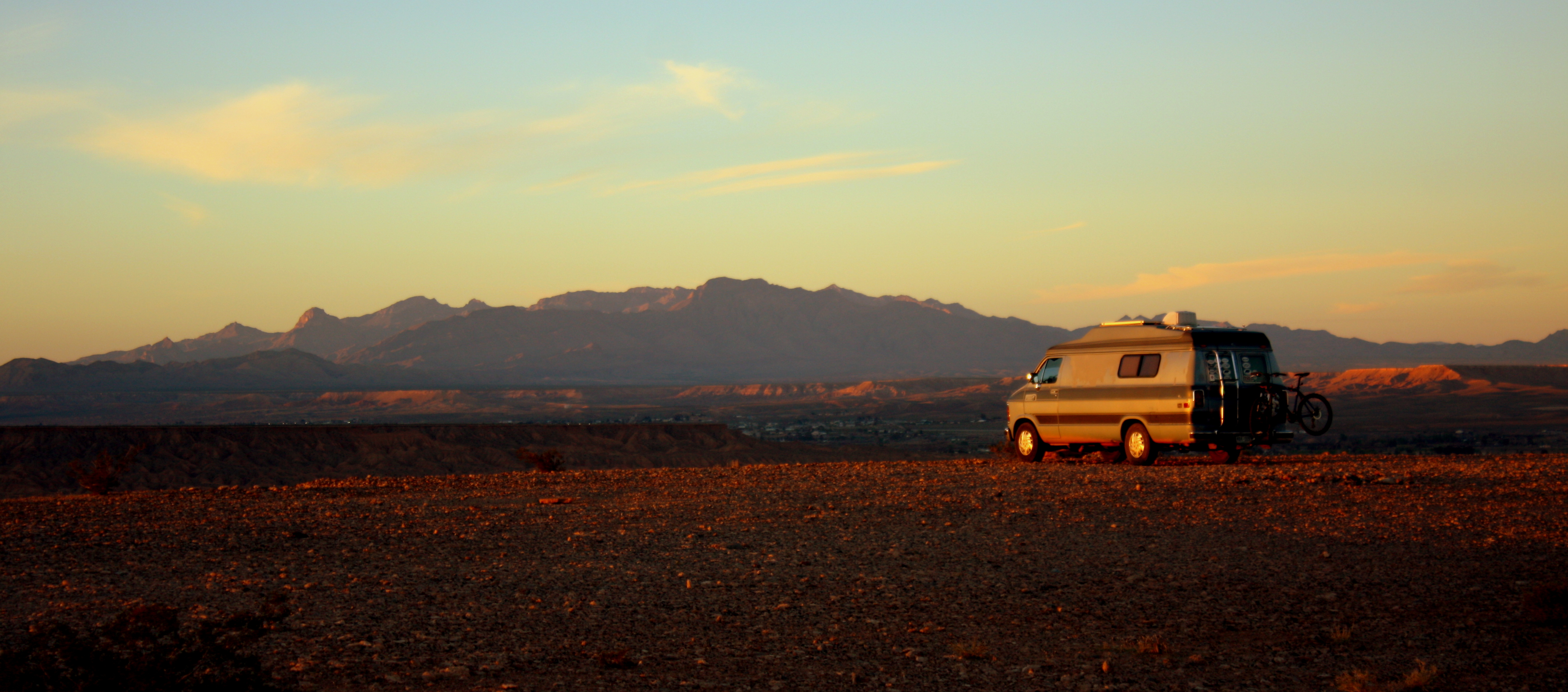

It contains countless cultural remains – from petroglyphs to sleeping circles to stone mortars. The Eagletail Mountains Wilderness rises nearly 2,000 feet above the Harquahala Plain. Heading into Arizona’s Eagletail Wilderness (Photo: Megan Kopp) Watch for the large BLM “Eagletail Mountains Wilderness Area” sign. Continue on the narrow and rougher pipeline road for 4 miles (6.5 km) to the BLM road 013. There is a BLM signboard and map at this junction. We use our on/off road bike to get us to hiking trailheads (Photo: Megan Kopp)įollow this for almost 7 miles (11 km) to a junction with a gas pipeline road veering to the right. Continuing straight, Centennial Road is gravel and has numerous low, unbridged washes that may be mudholes if it has recently rained. To reach the trailhead from our Saddle Mountain boondocking campsite, we headed west on Courthouse Road to Harquahala Valley Road.
Boondocking in arizona series#
This low desert hike ends at a series of petroglyph panels made up of hundreds of images left by the Hohokum and those who came before them. Petroglyphs on boulder at Saddle Mountain (Photo: Megan Kopp) Exploring Nearby Eagletail Wildernessĭay three, we chose Indian Spring as our gateway into the Eagletail Wilderness. Prehistoric remains include both petroglyphs and geoglyphs. There are studies that show that the Saddle Mountain area has been used for over 3,000 areas. This landmark has been a beacon for desert wanderers for thousands of years. Saddle Mountain is a distinctive peak when seen from the distance. Success – we found the petroglyph site at Saddle Mountain! (Photo: Megan Kopp) Work your way slightly upslope to the three petroglyph boulders. When you see signs about preserving archaeological sites, you are close to your quest. Heading straight towards the mountain, we followed Jeep tracks heading towards an obvious rock tower slightly separate from the main Saddle Peak massif. That afternoon we set out again to find the petroglyphs – and met with success. Besides a hitchhiking cholla that left a few scars when it was removed, the hike was a straight-forward uphill trek with a short scramble section. He followed a fairly well-established route starting at the end of the BLM kiosk road. The next day morning, Brad left early to summit Saddle Peak. (Photo: Megan Kopp) On the Hunt for Petroglyphs We weren’t the first by the looks of the lightly beaten path climbing up for an overlook of the dispersed camping area – dotted with restored buses, a homemade tiny home, fifth wheels, motorhomes, and there… look really close… there’s our “tiny” home on wheels! On a side peak of Saddle Mountain overlooking our home away from home Trailer leveled, awning out and staked down, solar panels set, a quick bit of lunch and we were off on an exploratory walk to see if could find the rock art we heard was in the area.Īlthough we didn’t find the petroglyphs, we did end up scrambling on a small subpeak of the Saddle. Saddle Mountain had both.Īrriving early afternoon, we found a spot in between a couple of motorhomes, far enough away we could still see the RVs, but not the people inside.
Boondocking in arizona for free#
We are always on the lookout for two things when we are searching for free camping in Arizona – what can we do outdoors (hike, bike, paddle) and/or any nearby historic or prehistoric sites we can explore. There is no charge to boondock at Saddle Mountain, but there is a 14-day limit. Numerous dirt roads – some rougher than others – guide campers to their home away from home in the shadow of the Saddle. You will soon see the BLM kiosk with a map and information on your left.

Keep left and continue following the paved road for less than a mile. Turn right and travel another 5 miles or so (8 km) to the junction with Courthouse Road. Take Exit 94 and head south for almost 3 miles (5 km) to the Salome Highway. Saddle Mountain is a distinctive saddle-shaped outcrop about 55 miles (88 km) west of Phoenix. Free Camping in Arizona’s Saddle Mountain (Photo: Megan Kopp) Where is Saddle Mountain? The reward for lack of services is having a scenic campsite completely out of sight of any other campers, if you so choose. We stock up with groceries, water and propane ahead of a boondock stay, have dual solar panels to charge batteries and use a porta-potty. Forest Service and BLM combined control over 32 percent of the land in Arizona!Ĭampers need to be completely self-contained to boondock. Each area varies, but more popular sites are signed for a 14-day limit stay and may have a minimal fee if there is a host and a water tank.ĭid You Know? Arizona has 18 national parks and monuments that make up approximately 3.5 percent of the state’s land.

In Arizona (and around the United States) the Bureau of Land Management (BLM) has countless multi-use areas where random camping is permitted free of charge on Public Lands.


 0 kommentar(er)
0 kommentar(er)
